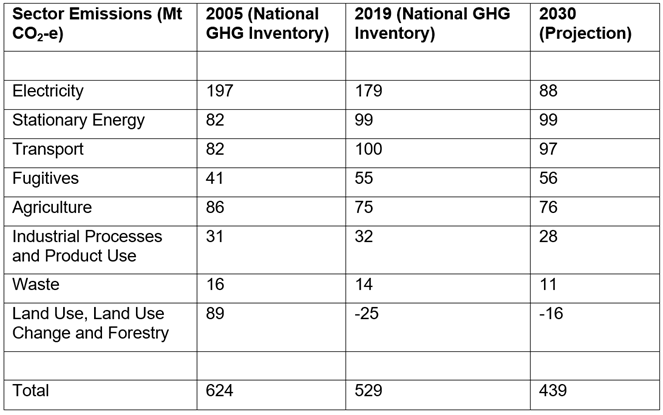To get to net zero by 2050 and significantly reduce emissions by 2030 other sectors will have to lift their game rather than let the energy industry do all the heavy lifting, according to the Australian Energy Council.
“The AEC strongly supports a net zero by 2050 commitment. Our members are clearly taking Australia’s strongest action in addressing climate change,” said the AEC’s Chief Executive, Sarah McNamara.
“Much improved economy-wide projections are welcome, but they are also a stark reminder that electricity is expected to account for almost all of Australia’s carbon emissions reductions by 2030.
“Data from the Department of Industry, Science, Energy and Resources shows national emissions from electricity are expected to fall 55 per cent by 2030 from the 2005 baseline and by 64 per cent in the National Electricity Market on the eastern seaboard. There will be 91 million tonnes less carbon between 2019 and 2030 because of the energy transition underway with renewables continuing to come into the grid and older plants closing,” said Ms McNamara.
“Yet, Australia’s total carbon emissions are expected to fall by less than 91 million tonnes this decade because some sectors will actually see their emissions increase. In fact, by 2030, stationary energy and transport will have become the largest sectoral emitters, reinforcing the need for other sectors to start picking up the slack if we are going to reach net zero. The government’s $20 billion support for technology will be very helpful, but these technologies are still some time away.
“Promisingly, for some sectors, electrification is an immediate and obvious way to decarbonise, and the technology is readily and economically available; such as heat pumps and electric vehicles. We just need policies, initiatives, and the will to see it happen.
“It is pleasing to see that Australia is now projected to reduce its 2005 emissions by between 30-35 per cent by 2030, beating the existing 26-28 per cent pledge. However even this falls behind a straight line to net zero in 2050.
“The only realistic way to get on that path is to start taking actions outside electricity this decade. On the other hand, piling yet more expectations on one sector to do the whole job risks more disruption that could in turn undermine community and business support for the long and wide net zero journey.”
Australia’s Emissions Projections 2021 Sectoral Breakdown (Dept of Industry, Science, Energy and Resources)

About the Australian Energy Council
The Council represents 20 major electricity and downstream natural gas businesses operating in the competitive wholesale and retail energy markets. These businesses collectively generate the overwhelming majority of electricity in Australia, sell gas and electricity to over 10 million homes and businesses, and are major investors in renewable energy generation.







